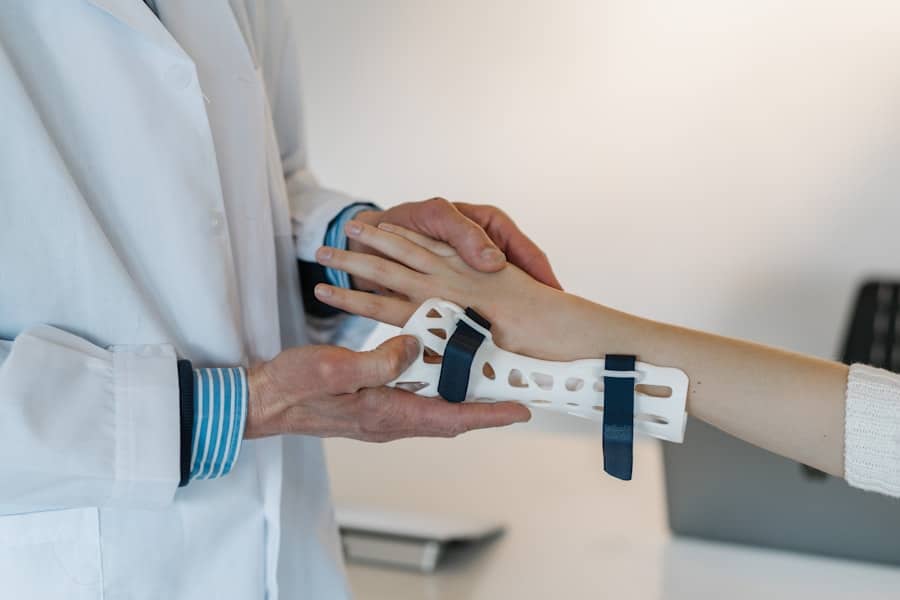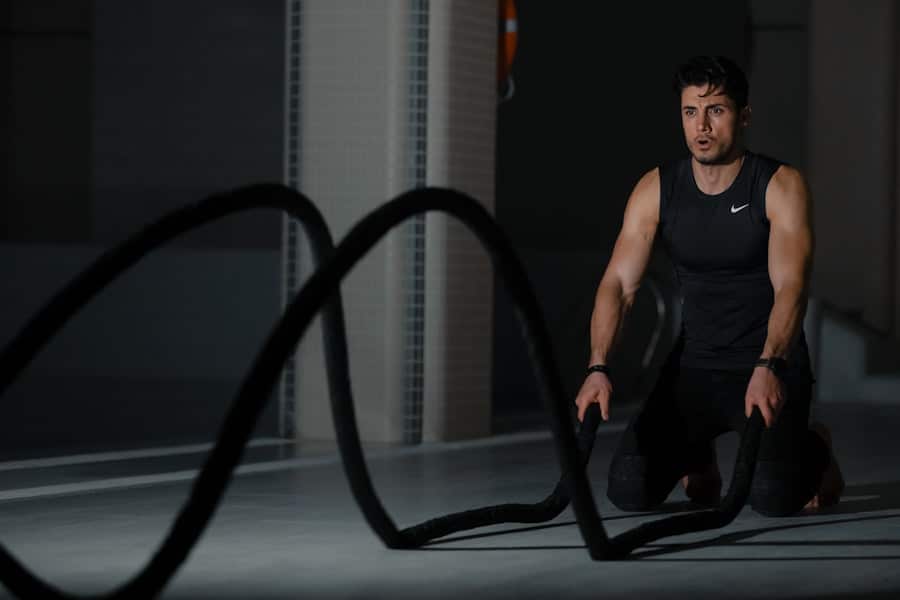In recent years, the landscape of athletic training and rehabilitation has been transformed by the advent of wearable muscle recovery devices. These innovative tools are designed to enhance recovery, reduce muscle soreness, and improve overall performance for athletes and fitness enthusiasts alike. As the demand for effective recovery solutions grows, so does the technology behind these devices, which now incorporate advanced features such as compression, electrotherapy, and thermal regulation.
The integration of these technologies into wearable formats allows users to experience the benefits of muscle recovery in a convenient and accessible manner. Wearable muscle recovery devices are not just limited to professional athletes; they have found a place in the routines of everyday individuals seeking to optimize their physical performance and expedite recovery times. From compression sleeves and electrotherapy units to heated wraps and cold packs, these devices cater to a wide range of needs and preferences.
As more people become aware of the importance of recovery in their fitness journeys, the market for these devices continues to expand, leading to innovations that promise to enhance their effectiveness and user experience.
Key Takeaways
- Wearable muscle recovery devices are designed to help athletes and fitness enthusiasts recover faster and more effectively after intense workouts or competitions.
- These devices work by using compression technology, electrotherapy, heat and cold therapy to improve blood circulation, reduce inflammation, and alleviate muscle soreness.
- The benefits of using wearable muscle recovery devices include faster recovery, reduced muscle fatigue, improved performance, and decreased risk of injury.
- Compression technology in muscle recovery devices helps to improve blood flow, reduce muscle vibration, and provide support to the muscles during and after physical activity.
- The future of wearable muscle recovery technology is promising, with advancements in materials, design, and technology to provide even more effective and convenient recovery solutions for athletes and active individuals.
How Wearable Muscle Recovery Devices Work
Compression Technology: Enhancing Blood Circulation
Many of these devices utilize compression technology, which works by applying pressure to specific muscle groups. This pressure enhances blood circulation, helping to deliver oxygen and nutrients to fatigued muscles while simultaneously flushing out metabolic waste products like lactic acid.
Electrotherapy Techniques: Blocking Pain and Improving Strength
In addition to compression, many wearable devices incorporate electrotherapy techniques, such as Transcutaneous Electrical Nerve Stimulation (TENS) or Electrical Muscle Stimulation (EMS). TENS units deliver low-voltage electrical currents through the skin to stimulate sensory nerves, effectively blocking pain signals from reaching the brain. EMS, on the other hand, uses electrical impulses to induce muscle contractions, which can help improve strength and endurance while also promoting blood flow.
A Comprehensive Approach to Muscle Rehabilitation
By combining these methods, wearable muscle recovery devices can provide a comprehensive approach to muscle rehabilitation. The result is a reduction in muscle soreness and an acceleration of the recovery process, allowing individuals to get back to their active lifestyles faster and with greater confidence.
The Benefits of Using Wearable Muscle Recovery Devices
The advantages of incorporating wearable muscle recovery devices into a training regimen are manifold. One of the most significant benefits is the reduction in recovery time following intense workouts or competitions. Athletes often experience delayed onset muscle soreness (DOMS) after strenuous activity, which can hinder their performance in subsequent training sessions.
By utilizing these devices, users can mitigate the effects of DOMS, allowing them to return to their training routines more quickly and effectively. Moreover, wearable muscle recovery devices can enhance overall athletic performance by improving muscle function and reducing the risk of injury. Regular use of these devices can lead to increased flexibility, improved range of motion, and enhanced muscle endurance.
This is particularly beneficial for athletes who engage in high-impact sports or activities that place significant strain on their muscles and joints. Additionally, the psychological benefits of using these devices should not be overlooked; knowing that one has access to effective recovery tools can boost confidence and motivation during training.
The Science of Compression Technology in Muscle Recovery Devices
Compression technology is a cornerstone of many wearable muscle recovery devices, and its efficacy is supported by a wealth of scientific research.
This pressure helps to increase venous return—the process by which blood is transported back to the heart—thereby enhancing circulation.
Improved blood flow not only aids in nutrient delivery but also facilitates the removal of metabolic waste products that accumulate during exercise. Studies have shown that compression garments can significantly reduce muscle soreness and swelling after exercise. For instance, a study published in the Journal of Sports Sciences found that athletes who wore compression garments experienced less muscle soreness 24 hours post-exercise compared to those who did not use them.
Furthermore, compression technology can also help prevent injuries by providing support to muscles and joints during physical activity. This is particularly important for athletes who engage in repetitive motions or high-impact sports where the risk of strain or injury is elevated.
Electrotherapy and Muscle Recovery
Electrotherapy has emerged as a powerful tool in the realm of muscle recovery, with various modalities offering distinct benefits for athletes and individuals alike.
TENS works primarily by targeting pain relief through electrical stimulation of sensory nerves, effectively interrupting pain signals before they reach the brain.
This method is particularly useful for individuals dealing with chronic pain or acute injuries. On the other hand, EMS focuses on stimulating muscle contractions through electrical impulses. This technique not only aids in muscle recovery but also serves as an effective training tool for enhancing strength and endurance.
Research has indicated that EMS can lead to significant improvements in muscle strength when used as an adjunct to traditional resistance training programs. By incorporating electrotherapy into wearable muscle recovery devices, users can benefit from both pain relief and enhanced muscle performance, making these devices versatile tools for athletes at all levels.
Understanding the Role of Heat and Cold Therapy in Muscle Recovery Devices
How Heat Therapy Works
Heat therapy works by increasing blood flow to targeted areas, promoting relaxation of muscles and alleviating stiffness. This is particularly beneficial for individuals suffering from chronic pain or tension in specific muscle groups.
The Benefits of Cold Therapy
Conversely, cold therapy is primarily used to reduce inflammation and numb pain following acute injuries or intense workouts. Cold compresses or cryotherapy can help constrict blood vessels, thereby minimizing swelling and providing immediate relief from pain.
Adaptable Wearable Recovery Devices
Many wearable recovery devices now feature dual-functionality, allowing users to switch between heat and cold therapy depending on their specific needs at any given time. This adaptability makes them invaluable tools for managing various types of muscle discomfort and injury.
The Importance of Proper Fit and Placement of Muscle Recovery Devices
The effectiveness of wearable muscle recovery devices hinges significantly on their proper fit and placement on the body. A device that does not fit correctly may fail to deliver the intended therapeutic benefits, potentially leading to discomfort or even exacerbating existing issues. For instance, compression garments must be snug enough to provide adequate pressure without restricting blood flow or causing discomfort during use.
Placement is equally crucial; applying a device to the wrong area may result in suboptimal outcomes or ineffective treatment. Users should familiarize themselves with anatomical landmarks and follow manufacturer guidelines for optimal placement. Many advanced wearable devices come equipped with sensors that help guide users in achieving the correct fit and positioning, ensuring that they receive maximum benefits from their recovery sessions.
The Future of Wearable Muscle Recovery Technology
As technology continues to evolve at a rapid pace, the future of wearable muscle recovery devices looks promising. Innovations such as smart textiles embedded with sensors are paving the way for more personalized recovery solutions. These smart fabrics can monitor physiological parameters such as heart rate, muscle tension, and temperature in real-time, allowing users to tailor their recovery strategies based on their individual needs.
Moreover, advancements in artificial intelligence (AI) are set to revolutionize how athletes approach recovery. AI algorithms can analyze data collected from wearable devices to provide personalized recommendations for recovery protocols based on an individual’s unique physiology and training history. This level of customization could lead to more effective recovery strategies that optimize performance while minimizing injury risk.
In conclusion, wearable muscle recovery devices represent a significant advancement in sports science and rehabilitation technology. By harnessing the power of compression, electrotherapy, heat, and cold therapy, these devices offer multifaceted solutions for enhancing recovery and improving athletic performance. As research continues to support their efficacy and technology advances further, we can expect even more innovative solutions that will redefine how athletes approach their training regimens and recovery processes.
If you’re interested in the latest technology trends, you may also want to check out this article on the top 10 best scheduling software for 2023. It provides valuable insights into how you can streamline your schedule effortlessly using cutting-edge software solutions. Just like wearable muscle recovery devices are revolutionizing the fitness industry, scheduling software is transforming the way we manage our time and tasks. Both articles showcase the power of technology in enhancing our daily lives.
FAQs
What are wearable muscle recovery devices?
Wearable muscle recovery devices are electronic devices that are worn on the body to aid in muscle recovery after physical activity. These devices typically use technology such as compression, vibration, or electrical stimulation to help reduce muscle soreness and improve recovery time.
How do wearable muscle recovery devices work?
Wearable muscle recovery devices work through various mechanisms such as compression, vibration, or electrical stimulation. Compression devices help improve blood flow and reduce swelling, while vibration devices help relax muscles and reduce soreness. Electrical stimulation devices use small electrical currents to stimulate muscle contractions and improve circulation.
What are the benefits of using wearable muscle recovery devices?
The benefits of using wearable muscle recovery devices include reduced muscle soreness, improved circulation, faster recovery time, and enhanced overall muscle performance. These devices can also help prevent injury and aid in rehabilitation for existing injuries.
Are wearable muscle recovery devices safe to use?
When used as directed, wearable muscle recovery devices are generally safe to use. However, it is important to follow the manufacturer’s instructions and consult with a healthcare professional if you have any underlying health conditions or concerns.
Who can benefit from using wearable muscle recovery devices?
Athletes, fitness enthusiasts, and individuals who engage in regular physical activity can benefit from using wearable muscle recovery devices. These devices can also be beneficial for individuals recovering from injuries or those looking to improve their overall muscle recovery and performance.



